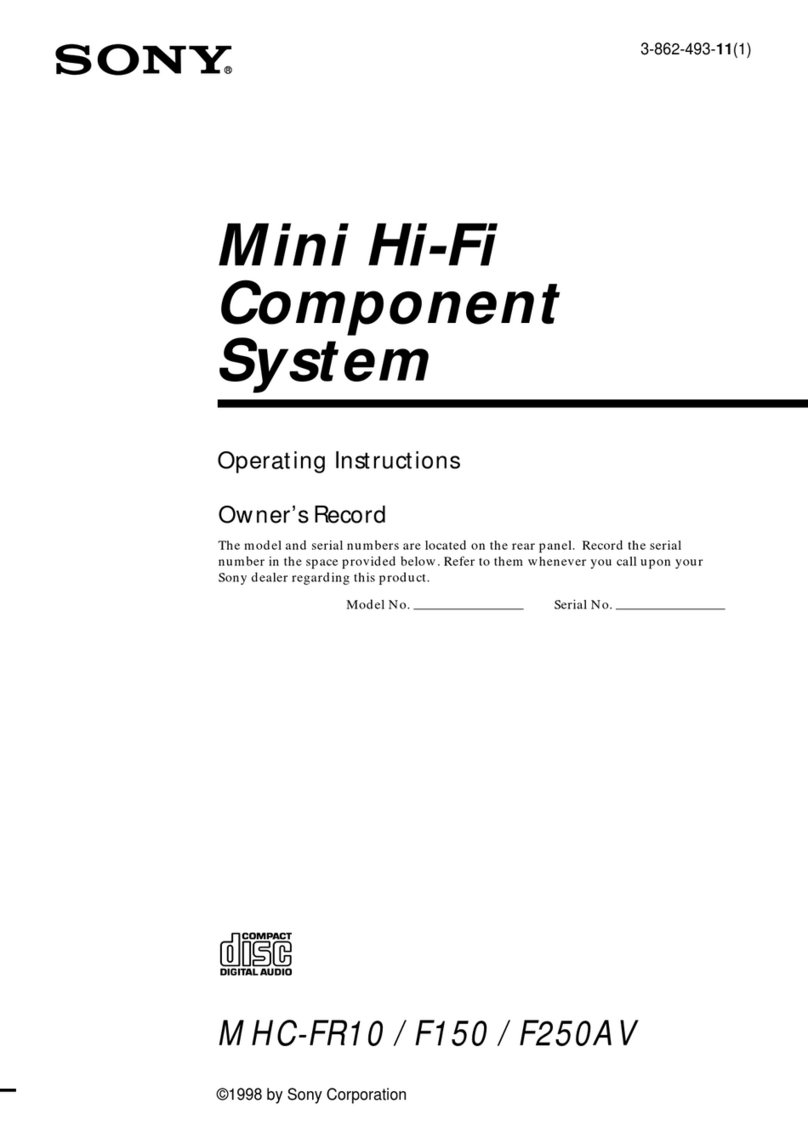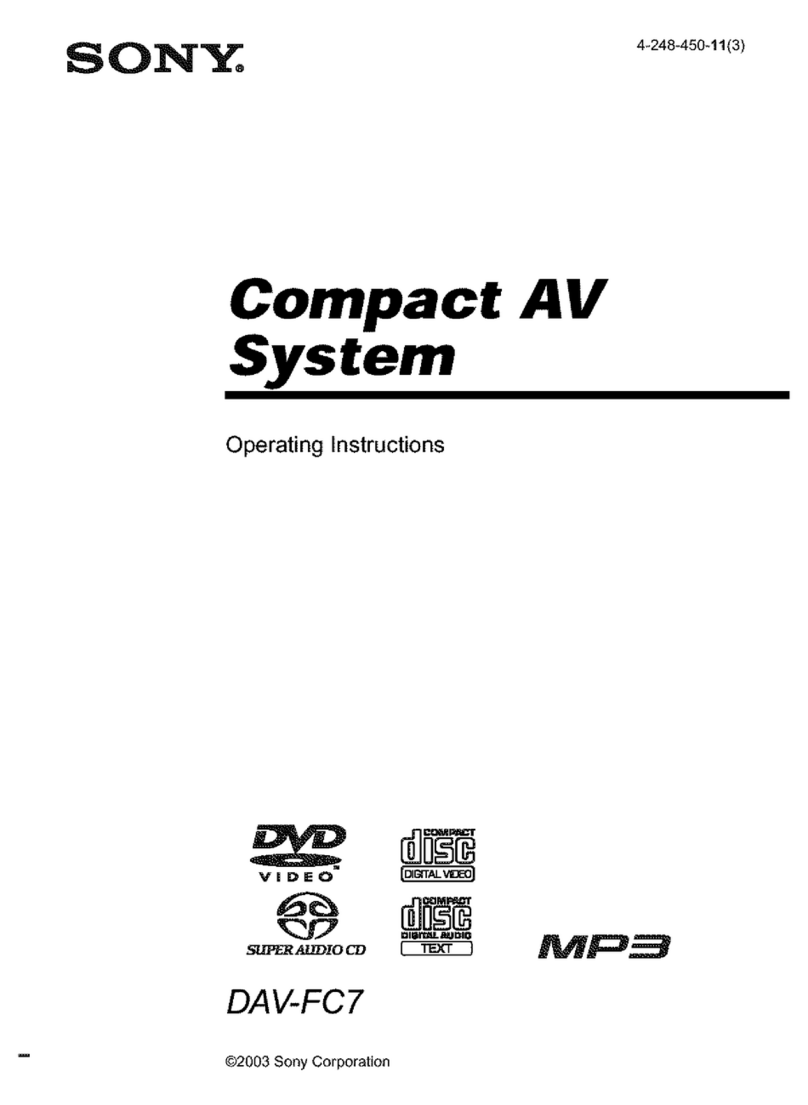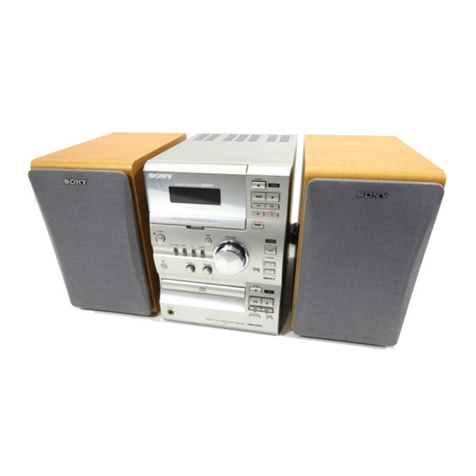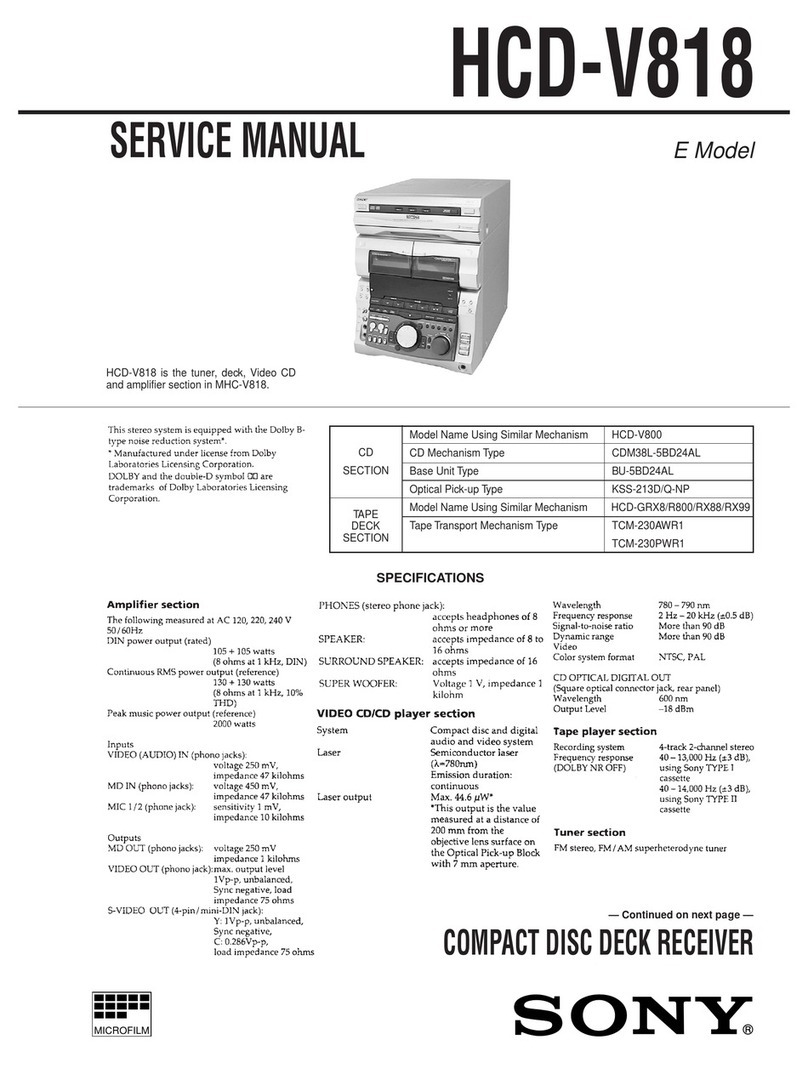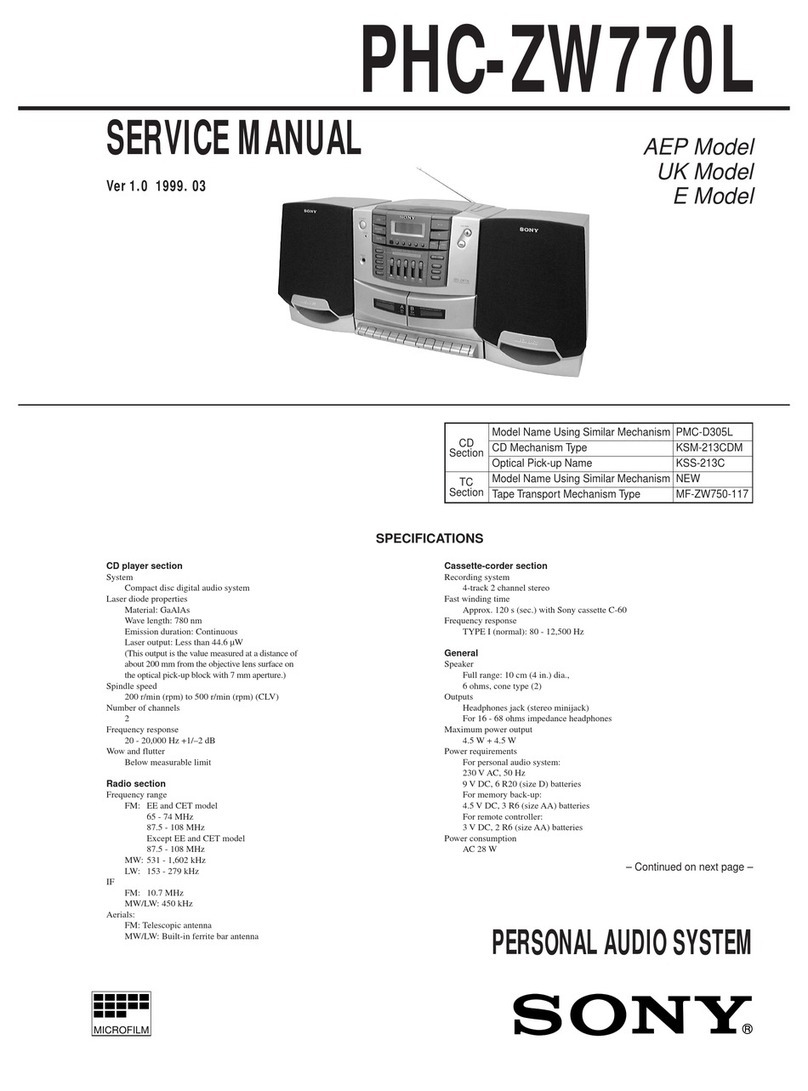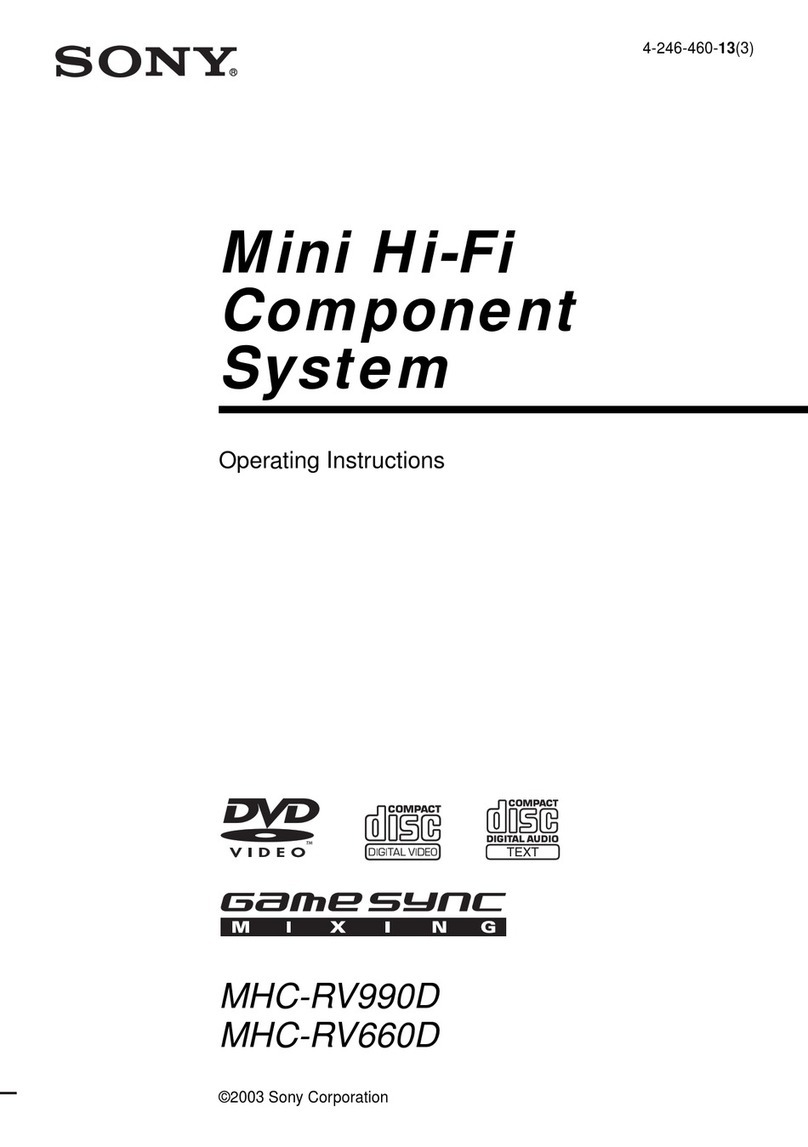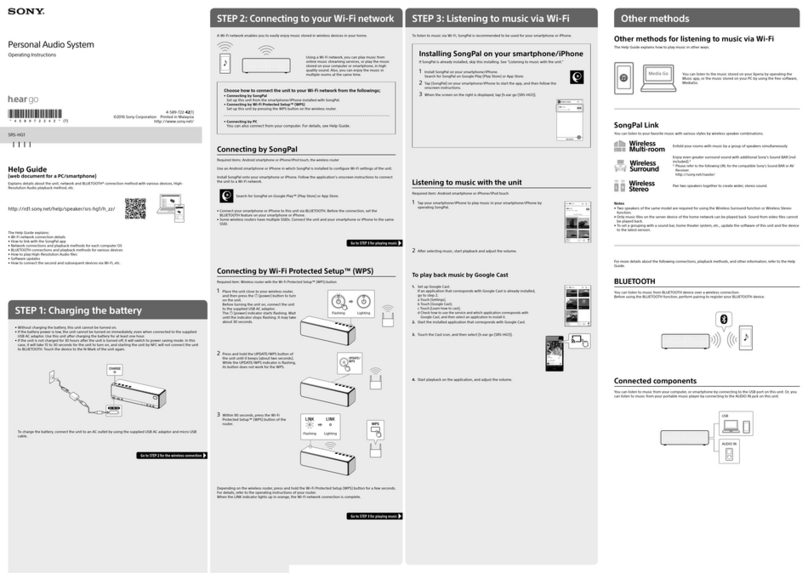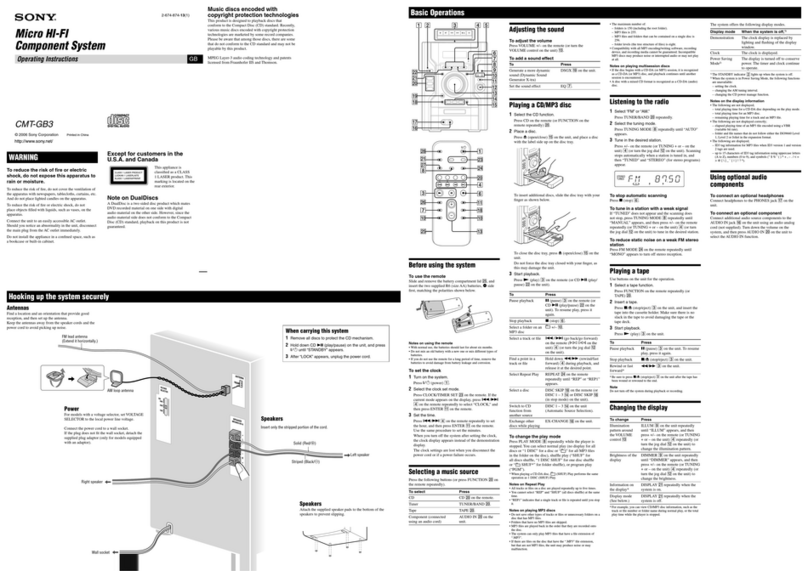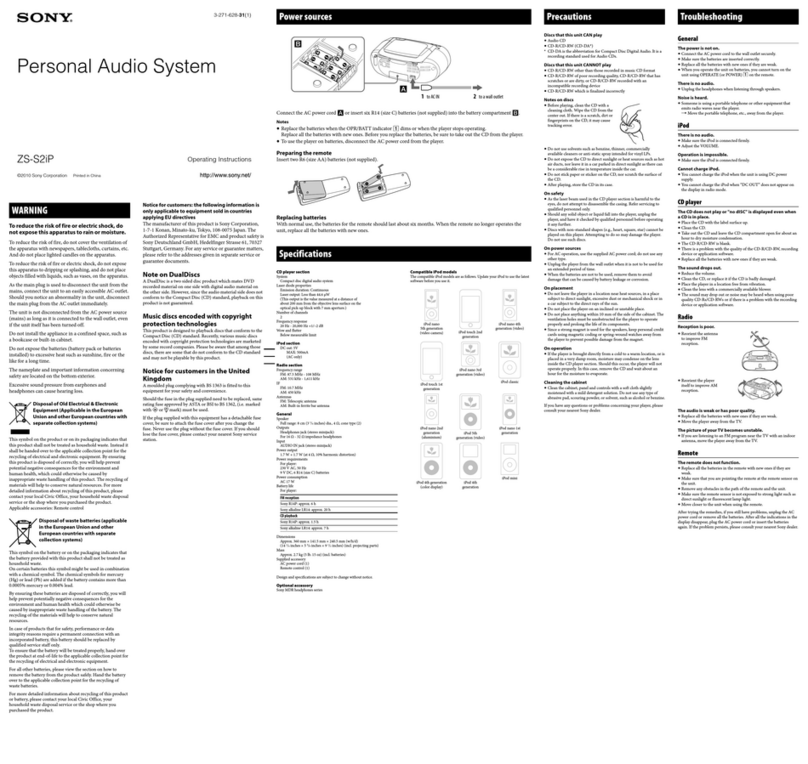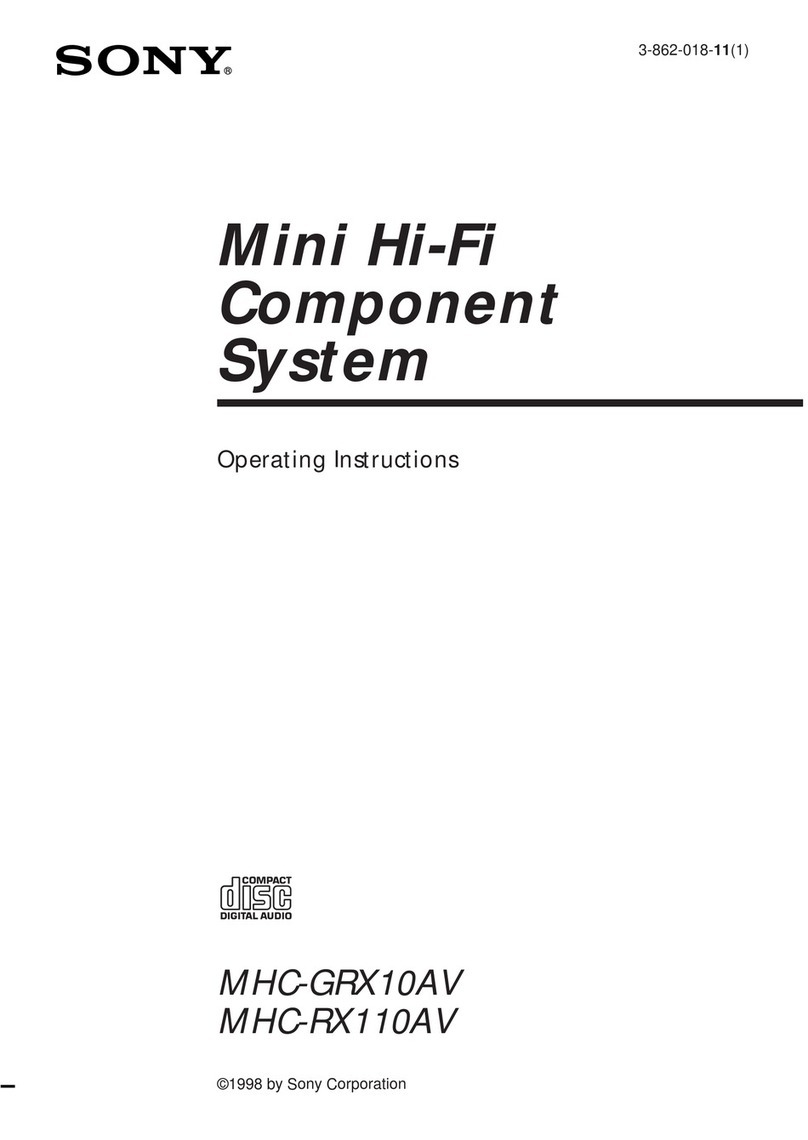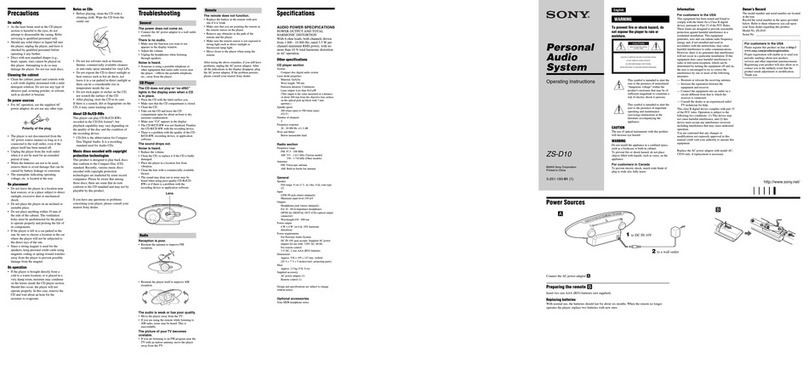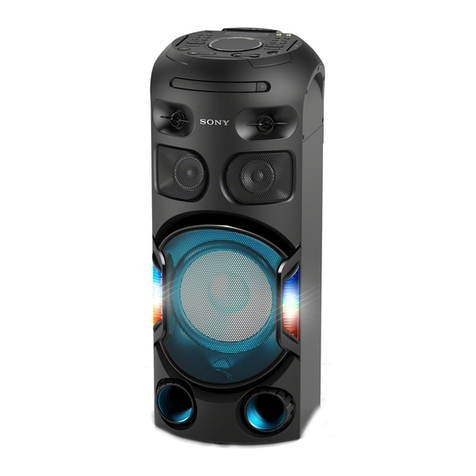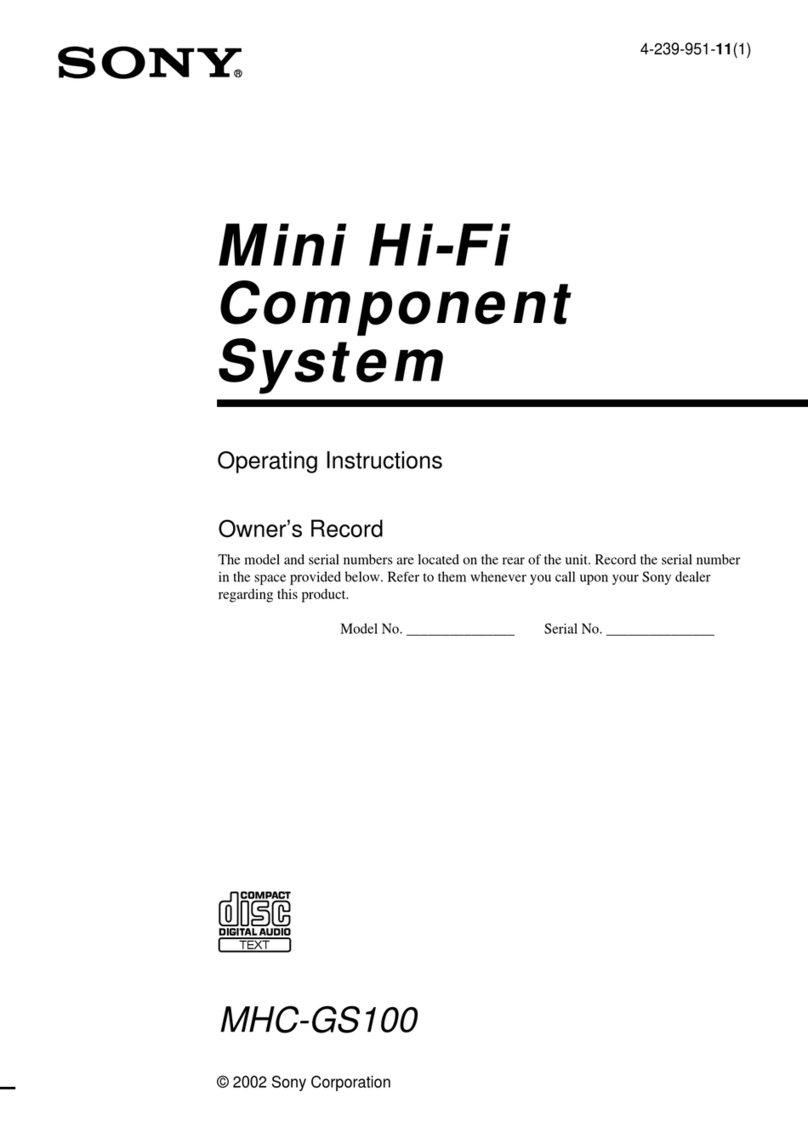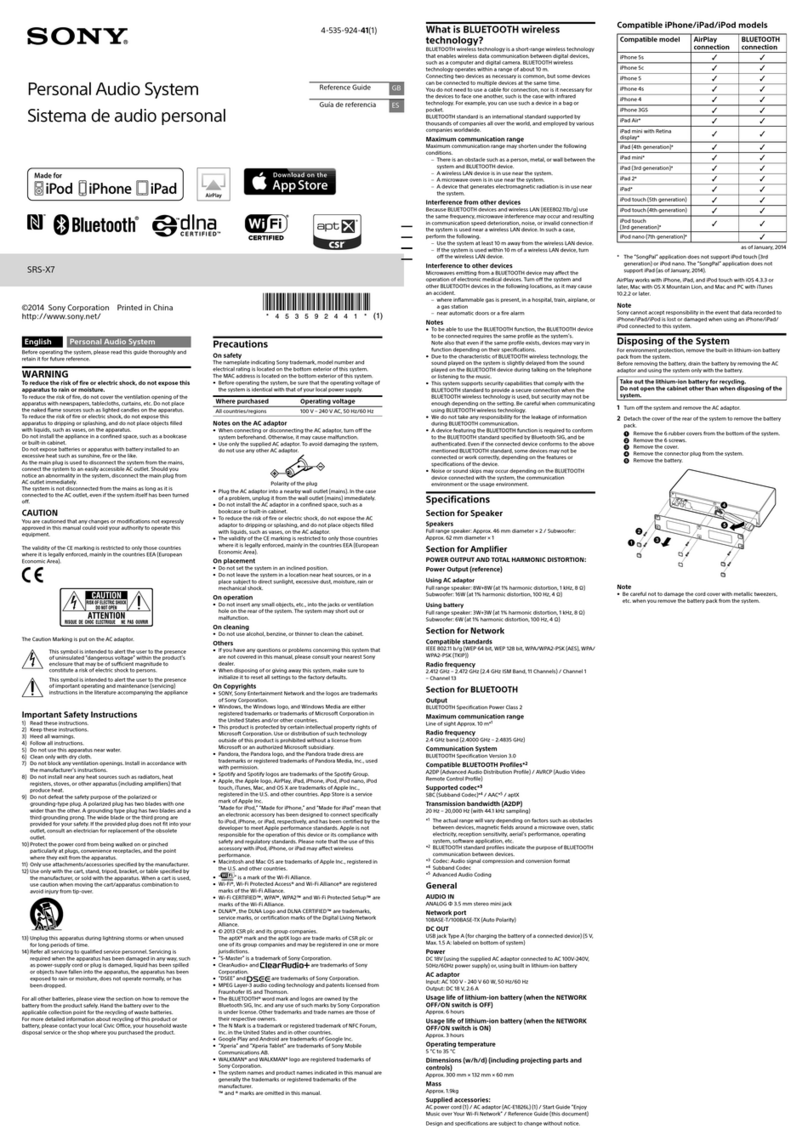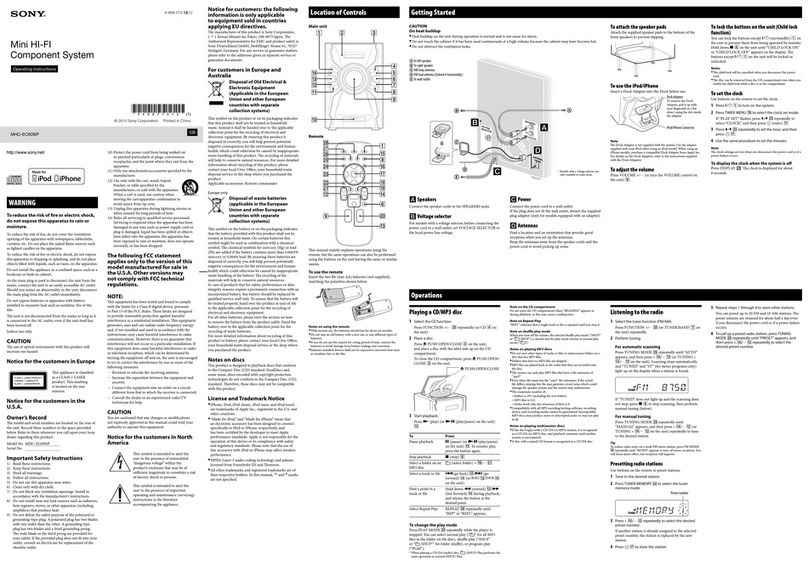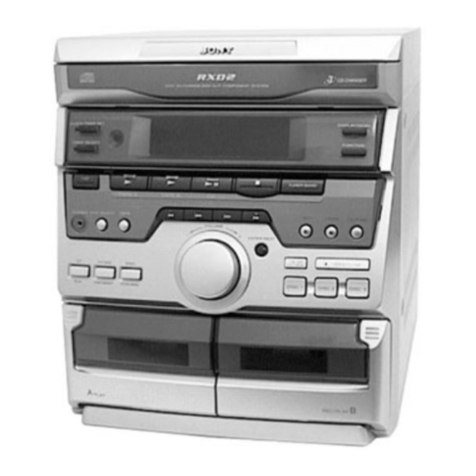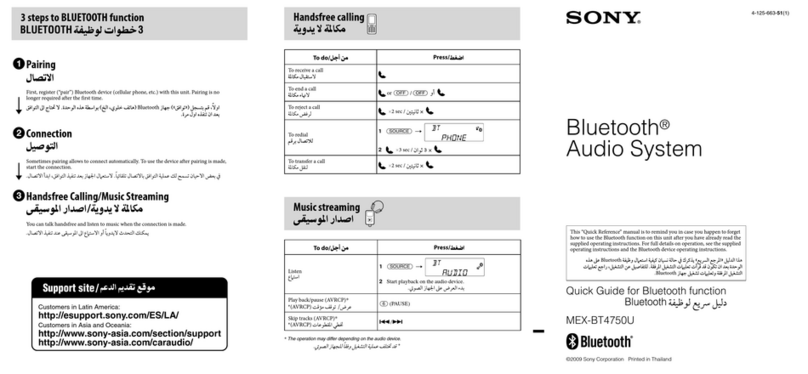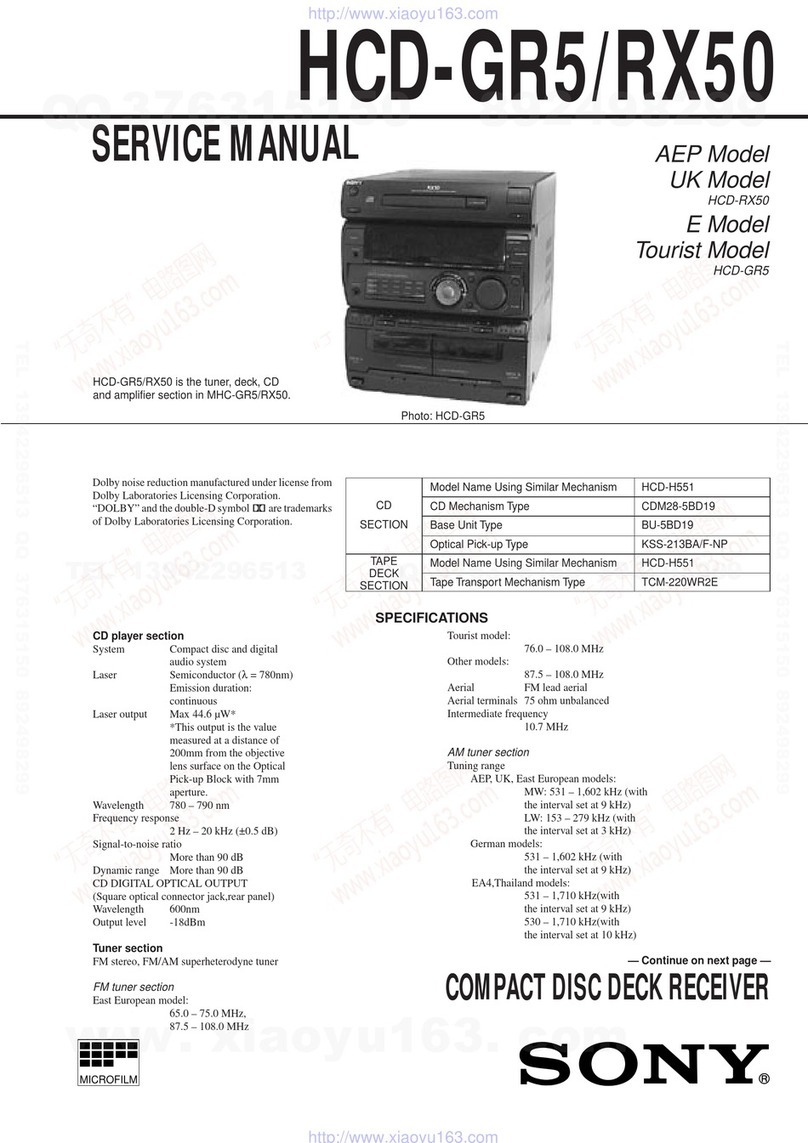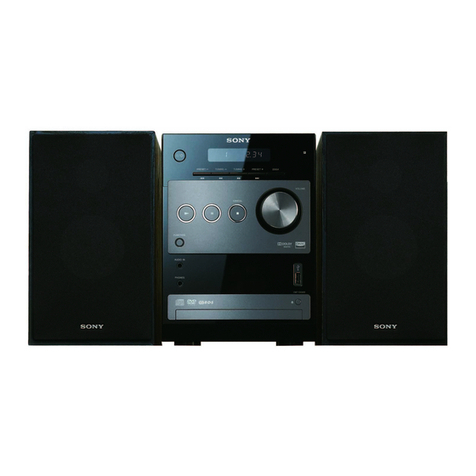
4
HCD-M90
1. SERVICING NOTES ............................................... 5
2. GENERAL ................................................................... 9
3. DISASSEMBLY
3-1. Disassembly Flow ........................................................... 10
3-2. Side Panel (L), Side Panel (R) ........................................ 11
3-3. Top Panel Section............................................................ 11
3-4. Mechanical Deck (Tape) ................................................. 12
3-5. Front Panel Section ......................................................... 12
3-6. Back Panel Assy.............................................................. 13
3-7. MAIN Board ................................................................... 13
3-8. CONTROL Board, Noise Shield Case ........................... 14
3-9. DAC Board ...................................................................... 14
3-10. DVD Board...................................................................... 15
3-11. Mechanism Deck (CDM55D-DVBU8B) ....................... 15
3-12. LOADING Board, Motor (LD) Assy (M901) ................ 16
3-13. RF-240 Board.................................................................. 16
3-14. Tray.................................................................................. 17
3-15. Optical Device................................................................. 17
4. TEST MODE.............................................................. 18
5. ELECTRICAL ADJUSTMENTS
DVD Section ................................................................... 27
Deck Section ................................................................... 28
6. DIAGRAMS
6-1. Block Diagram – DVD SERVO Section – .................... 29
6-2. Block Diagram – DVD MAIN Section (1/2) – ............. 30
6-3. Block Diagram – DVD MAIN Section (2/2) – ............. 31
6-4. Block Diagram – TUNER/TAPE DECK Section – ...... 32
6-5. Block Diagram – AUDIO Section – .............................. 33
6-6. Block Diagram
– KEY CONTROL/POWER SUPPLY Section –........... 34
6-7. Note for Printed Wiring Boards and
Schematic Diagrams ....................................................... 35
6-8. Printed Wiring Board – RF-240 Board (Suffix-11) – ... 36
6-9. Schematic Diagram – RF-240 Board (Suffix-11) – ...... 37
6-10. Printed Wiring Board – RF-240 Board (Suffix-22) – ... 38
6-11. Schematic Diagram – RF-240 Board (Suffix-22) – ...... 39
6-12. Printed Wiring Boards
– DVD (Side A) (Suffix-21)/LOADING Boards – ........ 40
6-13. Printed Wiring Board
– DVD Board (Side B) (Suffix-21) –.............................. 41
6-14. Schematic Diagram
– DVD (1/7) (Suffix-21)/LOADING Boards – .............. 42
6-15. Schematic Diagram
– DVD Board (2/7) (Suffix-21) – ................................... 43
6-16. Schematic Diagram
– DVD Board (3/7) (Suffix-21) – ................................... 44
6-17. Schematic Diagram
– DVD Board (4/7) (Suffix-21) – ................................... 45
6-18. Schematic Diagram
– DVD Board (5/7) (Suffix-21) – ................................... 46
6-19. Schematic Diagram
– DVD Board (6/7) (Suffix-21) – .................................. 47
6-20. Schematic Diagram
– DVD Board (7/7) (Suffix-21) – .................................. 48
6-21. Schematic Diagram
– DVD (1/7) (Suffix-22)/LOADING Boards – .............. 49
6-22. Schematic Diagram
– DVD Board (2/7) (Suffix-22) – ................................... 50
6-23. Schematic Diagram
– DVD Board (3/7) (Suffix-22) – ................................... 51
TABLE OF CONTENTS
6-24. Schematic Diagram
– DVD Board (4/7) (Suffix-22) – ................................... 52
6-25. Schematic Diagram
– DVD Board (5/7) (Suffix-22) – ................................... 53
6-26. Schematic Diagram
– DVD Board (6/7) (Suffix-22) – .................................. 54
6-27. Schematic Diagram
– DVD Board (7/7) (Suffix-22) – .................................. 55
6-28. Printed Wiring Boards
– DVD (Side A) (Suffix-22)/LOADING Boards – ........ 56
6-29. Printed Wiring Board
– DVD Board (Side B) (Suffix-22) –.............................. 57
6-30. Printed Wiring Board – DAC Board –........................... 58
6-31. Schematic Diagram – DAC Board –.............................. 59
6-32. Printed Wiring Board – TC Board (Suffix-12) –........... 60
6-33. Schematic Diagram – TC Board (Suffix-12) – ............. 61
6-34. Printed Wiring Board – TC Board (Suffix-32) –........... 62
6-35. Schematic Diagram – TC Board (Suffix-32) – ............. 63
6-36. Schematic Diagram
– MAIN Board (1/2) (Suffix-14) – ................................. 64
6-37. Schematic Diagram – MAIN (2/2) (Suffix-14)/
JACK (Suffix-11) Boards –............................................. 65
6-38. Printed Wiring Boards
– MAIN (Suffix-14)/JACK (Suffix-11) Boards – .......... 66
6-39. Printed Wiring Boards
– MAIN (Suffix-16)/JACK (Suffix-12) Boards – .......... 67
6-40. Schematic Diagram
– MAIN (1/2) Board (Suffix-16) – ................................. 68
6-41. Schematic Diagram – MAIN (2/2) (Suffix-16)/
JACK (Suffix-12) Boards –............................................. 69
6-42. Printed Wiring Boards
– CONTROL (Suffix-11)/VIDEO Boards –................... 70
6-43. Schematic Diagram
– CONTROL (Suffix-11)/VIDEO Boards –................... 71
6-44. Printed Wiring Boards
– CONTROL (Suffix-12)/VIDEO Boards –................... 72
6-45. Schematic Diagram
– CONTROL (Suffix-12)/VIDEO Boards –................... 73
6-46. Printed Wiring Board
– SWITCH Board (Suffix-11) – ..................................... 74
6-47. Schematic Diagram – SWITCH Board (Suffix-11) – ... 75
6-48. Printed Wiring Board
– SWITCH Board (Suffix-12) – ..................................... 76
6-49. Schematic Diagram – SWITCH Board (Suffix-12) – ... 77
6-50. Printed Wiring Board
– POWER Board (Suffix-11) – ....................................... 78
6-51. Schematic Diagram – POWER Board (Suffix-11) –..... 79
6-52. Printed Wiring Board
– POWER Board (Suffix-12, -21) – ............................... 80
6-53. Schematic Diagram
– POWER Board (Suffix-12, -21) – .............................. 81
6-54. IC Pin Function Description ........................................... 88
7. EXPLODED VIEWS
7-1. Panel (Side) Section ........................................................ 99
7-2. Front Panel Section ........................................................ 100
7-3. Top Panel Section........................................................... 101
7-4. Chassis Section-1 ........................................................... 102
7-5. Chassis Section-2 ........................................................... 103
7-6. Chassis Section-3 ........................................................... 104
7-7. Mechanism Deck Section (CDM55D-DVBU8B) ......... 105
7-8. Base Unit Section (DVBU8B) ....................................... 106
8. ELECTRICAL PARTS LIST ..............................107
Ver 1.3
